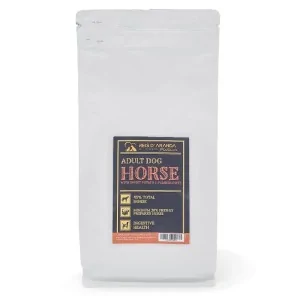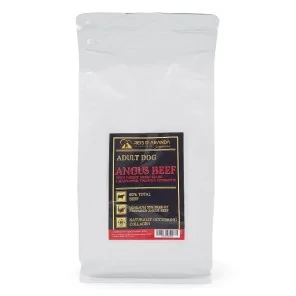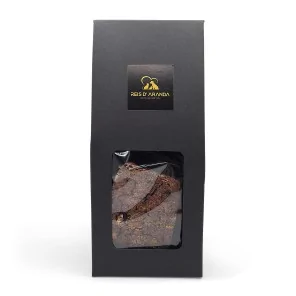The Tornjak originated from genetically homogeneous, almost extinct, indigenous shepherd dogs. These dogs have...
THE BIEWER TERRIER
INTRODUCTION
The Biewer Terrier is one of the breeds recognised by the FCI in the last few years, although they have been working on it since the 80's of the last century. This small long-haired dog is easily confused with the Yorkshire Terrier and, although they are related, the Biewer has some very clear differences.
THE ORIGIN OF THE BIEWER TERRIER
The Biewer Terrier originated in Germany in 1984, when two tri-coloured puppies were born in the kennel of experienced Yorkshire Terrier breeders Werner and Gertrude Biewer, and a veterinary friend suggested they call the dogs the Biewer Yorkshire Terrier. Soon after, a famous German singer took a liking to these dogs and added the words "a la Pom Pon" to the breed name. In the years that followed, Werner and Gertrude Biewer continued to work to develop a consistent population of the breed through selective breeding. American fanciers began importing the breed from Germany from 2002 onwards. These charming little dogs quickly caught on in the United States and as early as 2006, clubs were formed to protect and promote the new breed. During this period, the Biewer Terrier Club of America (BTCA) was formed. In 2007, members of the BTCA contacted Mars Veterinary to see if the laboratory could develop a programme to confirm whether the Biewer Terrier was in fact a strain of the Yorkshire Terrier or a separate breed. In September 2007, the laboratory had DNA testing ready for this purpose and 10 Biewer Terrier blood samples were sent to begin analysis. The test results showed that the samples clustered together in a manner typical of a pure breed, but separate from the Yorkshire Terrier, prompting further, more varied samples to be sent. This would be the first time a breed has been confirmed as a purebred dog through the collection of genetic material, rather than through pedigree records. The founding members of the BTCA worked long and hard to preserve and perfect the breed, now called the Biewer Terrier. After years of diligent work by the BTCA, the breed was accepted into the AKC Foundation Stock Service in 2014 and achieved full recognition in the Toy Group in 2021. Club Nacional del Biewer, in Spain, founded on 4 September 2017 as an independent club; the breed was recognised by the RSCE (Real Sociedad Canina de España) in 2023 and placed in group number 11 (breeds not recognised by the FCI).
WHAT IS THE BIEWER TERRIER LIKE?
The Biewer Terrier has long, straight hair falling evenly in a curtain shape on both sides of the body from the base of the skull to the end of the tail. The appearance of the animal should be very compact and neat. The tail should be carried high. The body should be powerful and well proportioned.
The standard of the Club Nacional del Biewer (Spain) reads as follows:
TEMPERAMENT: Alert and intelligent toy terrier. Lively, balanced character.
HEAD: The head should be rather small and flat, the skull not too prominent, with absolute black on the nose. The hair on the head is long with colours: white-blue-gold, with symmetry.
EYES: Medium sized, dark and bright with a strong expression of intelligence, set in such a way as to be directly visible. They should not be too prominent and the flames should be dark in colour.
EARS: Small, straight, inverted V-shaped ears, set on high, not too wide apart, covered with short hair.
TEETH: Must be all. Scissor bite or acceptable level.
FOREQUARTERS: Should be straight, muscular and covered with white or off-white hair.
HIND LEGS: Should be straight, muscular and covered with hair.
FEET : As round as possible, with white or black nails, covered with hair.
BODY: Very compact with well formed hips, height of shoulders the same as height of croup.
TAIL: With plenty of hair, carried higher than level of back. Not docked.
LENGTH: The body may be slightly longer than the height of the dog.
GAIT / MOVEMENT: Released with plenty of thrust, movement of front and hindquarters straight, keeping the back level and straight.
COAT : The coat on the body is 3/4 of the length of the dog, or long enough to reach the ground, completely straight (not wavy), silky glossy and of fine silky texture with no undercoat.
COLOURS:
- HEAD COLOURING: Blue / black, golden / tan and white with good symmetry. Any combination of the following two colours (blue or black and gold or tan); (gold or tan and white) in good symmetry is acceptable.
- BODY COLOURING: The coat on the back is blue or black and white. The amounts of each colour are of personal preference with no dominant pattern. No amount of golden hair can be found on the back, belly, chest, legs or feet. A small amount of golden hair may be found around the anus. Chest, stomach, legs and tip of tail should be white. The white of the chest should run up the neck to cover the chin. Legs should be white from elbows to feet.
WEIGHT: De 1,8 and 3,6 kg.
HEIGHT: From 17.8 to 27.9 cm.
FAULTS: Any and all differences within standard. Rounded back, gold or other colour on body, legs or tail. Light eyes and nose. Drooping ears. Curly coat. Males should have two apparently normal testicles fully descended into the scrotum.
IS THE BIEWER TERRIER THE SAME AS THE YORKSHIRE TERRIER?
The yorkshire terrier breed has given rise to other colour varieties, although, in reality, the differences between them are usually minimal and not as marked as one might think. However, each variant of the yorkshire has some peculiar aspect, the biewer terrier being the best example. These are the product of selective breeding. Their coat is bluish white and not black or brown, as in other breeds derived from the yorkshire. Colour aside, the biewer terrier shares with its ancestor the active and energetic character, small size and sociable personality. They are also physically compact but delicate, but no less courageous, as well as extremely well-balanced. If you are not very up to date with the events of the canine world, you could easily think that the biewer tierrer are just another yorkshire, but of an unusual colour. This confusion is normal, since, officially, the biewer tierrer were recognised as a breed in 2006, and their breeding began in the 1980s. This makes them one of the newest dog breeds in existence.
CARE OF THE BIEWER TERRIER
Like any dog, the Biewer Terrier requires specific care in order to maintain an optimum state of health, with regard to hereditary diseases (diagnosable in the health tests carried out by all breeders):
- PROGRESSIVE ATROPHY OF THE RETINA: There are two types of photoreceptor neurons in the retina: rods (located more on the periphery of the retina) and cones (located closer to the centre). These photoreceptors gradually deteriorate so that the retina is no longer able to capture light and, as it is unable to send information to the brain, the animal gradually stops seeing. It is often difficult to detect and the owner does not realise until the disease is very advanced. It is a hereditary disease that affects both eyes equally, some breeds are more predisposed than others but it can affect any breed and animal.
- PATELLA LUXATION: We speak of patella luxation in dogs when the patella, a small bone located in front of the knee joint and which needs to be correctly positioned for the correct functioning of the animal's limb, moves out of its place, the trochlea, causing pain and functional weakness in the dog. Among the luxations, medial luxation is the most frequent. It occurs in 80% of cases, while lateral luxation only occurs in 20%. Between 30% and 50% of cases are bilateral and more frequent in females than in males, especially in small breeds and toys. Lateral luxations can occur in small adult breeds and in puppies of large and giant breeds. It is a pathology characterised by a misalignment of the limb, deformations occur during the development of the animal, which cause the patella to move out of place. It may be due to a congenital disease or, in some cases, caused by trauma.
As for their diet, it is necessary not to overdo it with soft food or tinned food, as the size of the Biewer Terrier's teeth makes them prone to dental diseases such as tartar build-up. It is best to opt for quality feed whose first ingredient is animal protein (not by-products), such as beef, horse or fish (whose richness in Omega 3 will help to keep the coat healthy and shiny). As for grooming, the Biewer Terrier requires daily brushing and the application of moisturising dry sprays to prevent breakage and tangling of the coat, baths are recommended fortnightly for long-haired dogs and monthly for shorthaired dogs. A good moisturising shampoo and a nourishing mask should be used.
CONCLUSION
The Biewer Terrier is a cheerful, elegant breed and very suitable for urban families, its striking colour pattern attracts all eyes but we must never forget that they require specific care and a strong commitment from their owners.
Leave a comment
Log in to post comments
















